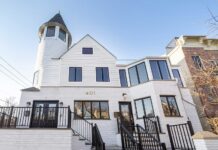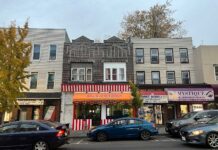This is the fourth part of our series covering the construction of Jersey City’s first certified passive house. If you’re just tuning in, you can catch up with Part One, Part Two and Part 3.
This series is a collaboration with Mowery Marsh, the architects leading this project.
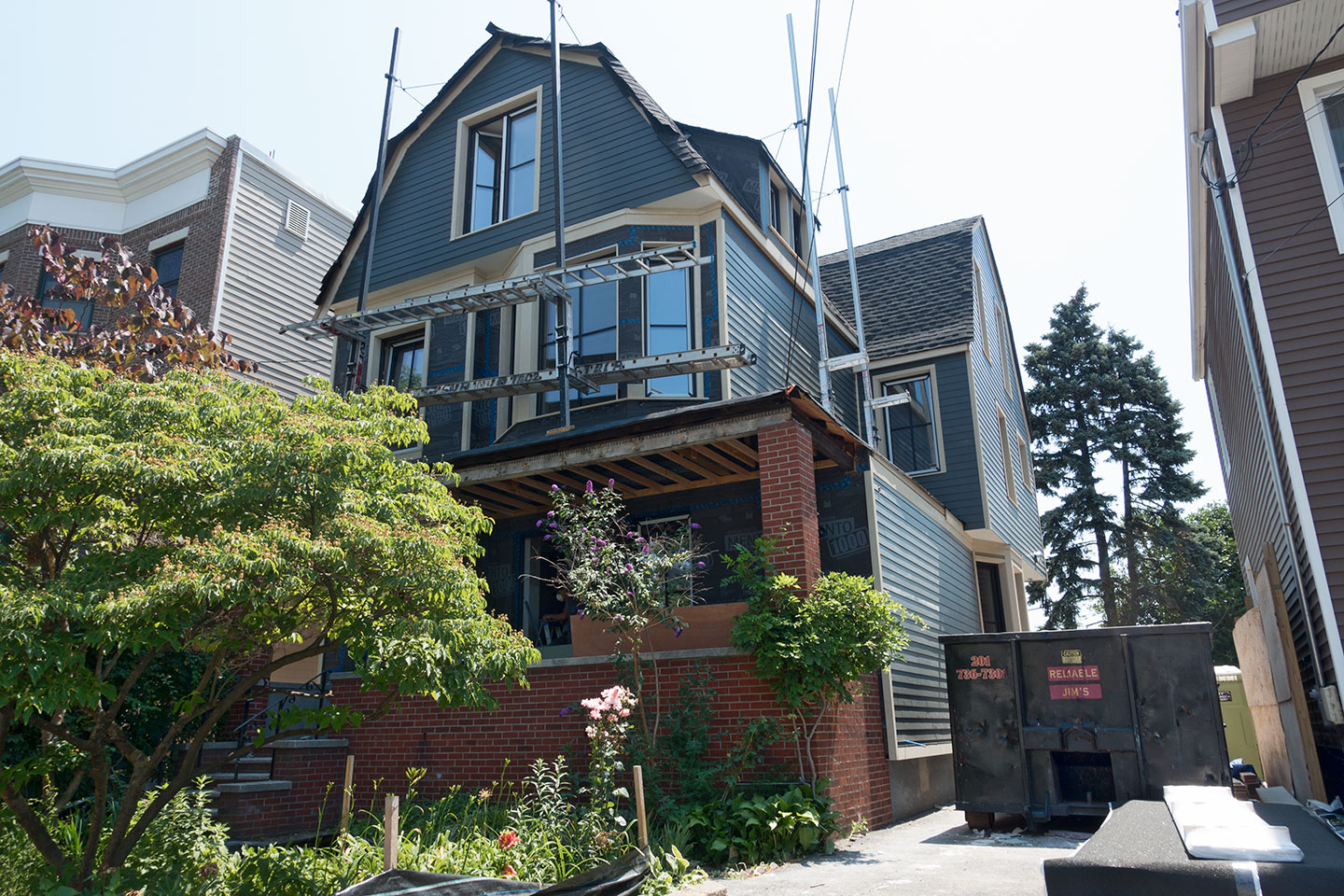
When it comes to energy efficiency, large windows don’t typically come to mind. Windows are one of the weakest areas of the average home. They tend to be poorly insulated, thermally weak at the frame and susceptible to the elements. When a rising sun shines through the glass in the summer, the home quickly heats up. On the other hand, cold wind leaking around the sashes in the winter creates chilly drafts.
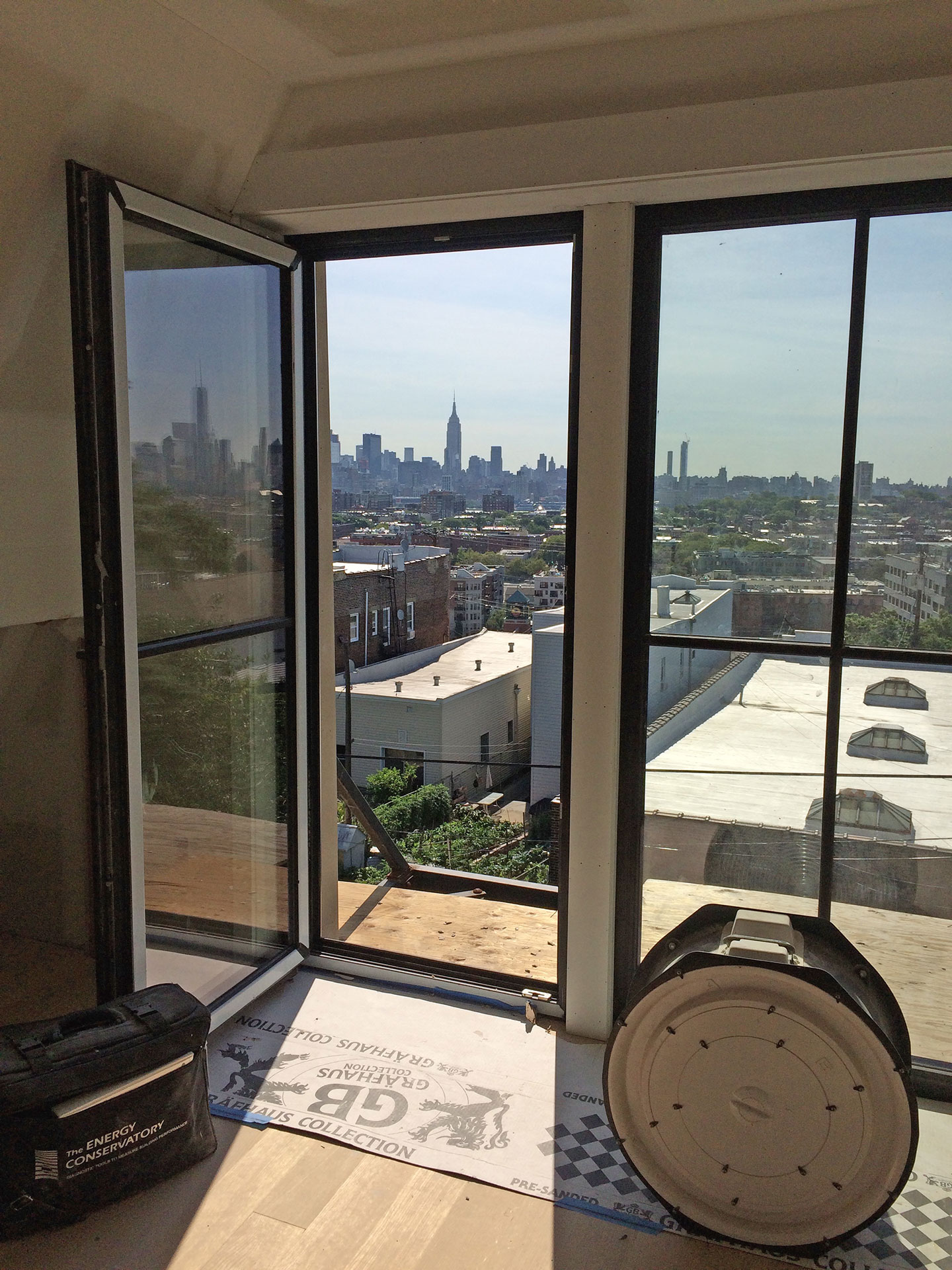
Sure you could build a well insulated concrete bunker that would be hugely efficient, but no one would want to live there. Brian Marsh, of Mowery Marsh the lead architect on the project, doesn’t believe one should have to compromise just to live in a highly efficient home. “We always let the design and architecture lead, not efficiency.” This particular project sits on the Hudson River Palisade with direct views of the Manhattan skyline. When planning the project, one of the biggest goals was to optimize these views from every level. Small windows were never an option.
This particular project sits on the Hudson River Palisade with direct views of the Manhattan skyline. When planning the project, one of the biggest goals was to optimize these views from every level. Small windows were never an option.
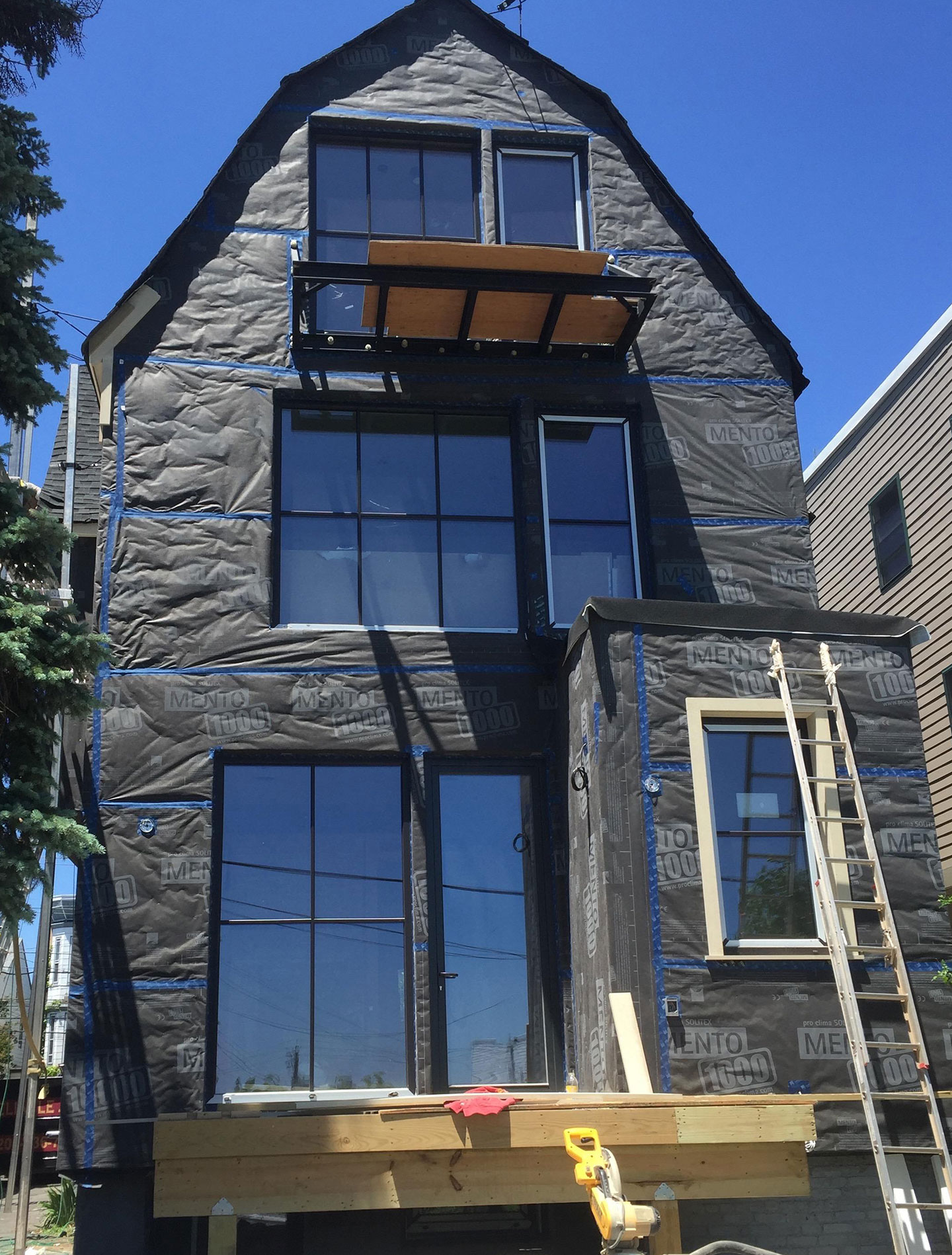
So how do you reconcile energy efficiency with the desire to have large windows when planning a passive project?
If done appropriately, the thermal risks of large windows can be easily mitigated and actually help us with our cooling in the summer and heating in the winter. But let’s start with how we handle the thermal challenges. The windows used on this project aren’t your standard windows, they are highly insulated triple-glazed windows. That means, where your average window has two sheets of glass separated by a sealed vacuum, these have three sheets of glass. By using three sheets, the windows now have an additional vacuum barrier to better insulate the window. If you feel the glass in the dead of winter, it will feel the same temperature as the wall?!
The windows used in this project are European and differ from the triple glazed units currently made in America. The most significant difference is in the overall thermal resistance (R-value) of the windows. American made windows measure the R-value at the middle of the window, usually the strongest spot thermally. European windows measure the R-value of the entire enclosure, including the frame. On American made windows, the frame is the weakest point with air infiltrating the joints and the sash material conducting the cold. On European made windows, the glass is thoroughly gasketed to prevent air leaks and the thermal design of the frame ensures it hits the required R-value.
There is also the solar reflectance to consider. The windows with an East or West facing exposure get a lot of unwanted solar heat gain in the summer months. In a Passive House, those windows are specified with a higher heat gain coefficient to reflect the sun off the window instead of allowing it to shine through and heat up the home. In your typical house, all the windows have the same glass and don’t account for orientation. This fine tuning of the window specification allows for more thermal control and consistent temperature throughout the house.

When passive building was originally introduced in 1996, there was a misconception that in order to achieve such a high level of efficiency, window sizes would be reduced and the home would end up dark and bunker-like. But in reality, these highly efficient windows become an asset rather than a threat to the thermal comfort. In the winter when the sun is low, large windows can capture that heat and it will be retained throughout the day given the thermos like quality of the construction. And in the summer, windows that are properly placed can allow for cross ventilation and cooling of the house. Clients of Mowery Marsh often ask if they can open the windows in a Passive House. Their answer is… of course! When it’s a beautiful day outside why wouldn’t you?!
